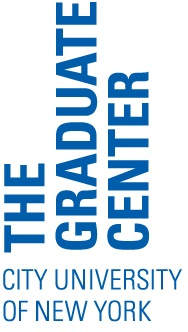Creating a Digital Teaching Portfolio
The team over at OpenCUNY put together a useful workshop last month on creating a digital teaching portfolio, as part of a series of events this semester centered around how to establish a scholarly online presence. In case you missed it, they’ve put up a very helpful blog here with details from the event. Here are a few tips we picked up:
Setting up a website
When you put submit a hard copy of your teaching portfolio as part of your application package, you won’t want to overwhelm a hiring committee with hundreds of pages of material. But creating an online teaching portfolio gives you an additional way to demonstrate to a committee that you’ve been reflective and engaged in becoming a more effective teacher. For example, you might put up documents on your website, and then refer to them during a job interview (note that you can keep all or parts of a website password-protected, so you can be selective about who you’re sharing this material with).
Anyone with a GC email address can create a free website on OpenCUNY using WordPress software. WordPress software is relatively easy to use–no coding knowledge required!–and the OpenCUNY main site features helpful info to get you started (including posts on WordPress basics and lingo and making your site sparkle).
The teaching philosophy
The material you add to your teaching portfolio should demonstrate that you’ve been thoughtful about your teaching philosophy and the methods that go along with it. Last month’s speakers, Julia Jordan, Paul C. King, and Gwen Cohen-Brown of City Tech, had a few suggestions for how to avoid resorting to vague clichés when it comes to articulating what that teaching philosophy is:
- Write down your own specific methods first, Professor King suggested. First, brainstorm specific practices that have worked well for you in the classroom, and then work backward by asking how they might relate to a more general teaching approach. For example, King said he frequently shares anecdotes from his experience as an architect and brings in his own professional work to share. This supports his wider teaching goal “to have my students share my curiosity about the world and to instill them with my love of learning” (you can read the rest of King’s teaching portfolio here).
- Ask “What do effective teachers do?” Professor Cohen-Brown advised making a list (for example, “effective teachers are organized and prompt,” they create “an atmosphere of mutual trust and respect,” and they “promote cultural sensitivity and diversity”) and then brainstorming how one might prove that a teacher embodies these qualities.
- Continually reflect. The teaching portfolio is not a static document, King reminded workshop attendees. It should demonstrate how you’ve evolved already as a teacher and show your potential for future growth. Cohen-Brown recommended using the free SALG website every semester to get feedback from students on what’s worked and what you might improve in your courses.
Other content to consider adding
- Sample syllabi
- An annotated syllabus
- Sample assignments
- Faculty observation reports and student evaluations
- Discussion of future teaching goals
- A video of yourself teaching (you’ll need to get students to sign a release form before you film, however!)
- Sample student work. King said that he has scanned first and subsequent drafts of student papers–with his comments included–to show how his students have improved. Again, you’ll need to get permission from students and remove names.
Other resources
- Professor Cohen-Brown’s teaching portfolio
- Professor King’s PowerPoint from a workshop on teaching portfolios he gave to faculty at the Fashion Institute of Technology.
- The Faculty Commons center at City Tech also donated a number of books on teaching portfolios and pedagogy to our office. You can send us an email or stop by room 3300.30 during regular business hours to check them out.
[show_avatar email=4265 user_link=authorpage show_name=true show_email=true show_biography=true avatar_size=30]





Reportback & Resources from Beyond the Blog: Making Your (Digital) Teaching Portfolio - The OpenCUNY Academic Medium
April 18, 2015 @ 6:38 pm
[…] Flannery Amdahl wrote a post about the event on the GC Career Planning and Professional Development Blog […]